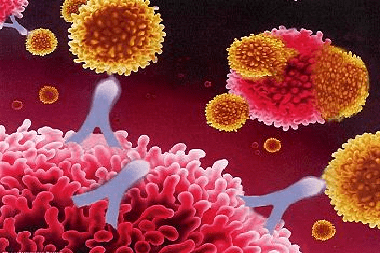Immunology and Allergology >>>> What do we know about immunoglobulins?
What do we know about immunoglobulins?

Immunoglobulins (or Ig for short) are antigen-recognition molecules of protein origin (antibodies) produced by B-lymphocytes (plasma cells). They are composed of polypeptide chains in various combinations.
The human immune system is capable of producing millions of antibody variants for virtually any type of antigen. But where does the gene information and the structural components of these antibodies come from, if a person inherits only about 120 structural genes for the synthesis of immunoglobulins (called germline immunoglobulin genes)?
Various combinations of genetic codes of immunoglobulins are formed in the course of human life during the process of birth and differentiation of B-lymphocytes. That is, each individual B-lymphocyte receives its own unique combination of DNA, RNA, followed by protein synthesis, obtained from the available germline genes. It resembles a kind of "kaleidoscope" for different combinations of DNA.
This unique ability to create many combinations from a limited set of initial components is considered phenomenal in the life of lymphocytes. No other cells known in nature today possess this ability. This phenomenon was invented by nature so that multicellular organisms could survive in the multibillion-dollar world of potentially dangerous microorganisms, since complex creatures evolve many orders of magnitude slower than simple ones, and it would be difficult (even practically impossible) for them to adapt to the diversity of the environment. But by endowing lymphocytes with such an ability, nature has balanced the chances of survival.
What are immunoglobulins (antibodies)?
Immunoglobulins are grouped into 5 classes (M, G, A, B, E) and are accordingly recorded as IgM, IgG, IgA, IgB, IgE. Some of the classes of immunoglobulins have subclasses:
- IgG class immunoglobulin has subclasses IgG1 IgG2 IgG3 IgG4
- Immunoglobulin class IgA has subclasses IgA1 IgA2
- Immunoglobulin class IgM has no subclasses
- Immunoglobulin IgB class has no subclasses
- Immunoglobulin IgE class has no subclasses
Each class of immunoglobulins (antibodies) has its own qualitative and quantitative characteristics.
Immunoglobulins of the IgG class are the only antibodies that are transmitted through the placenta; they are present in biological fluids and account for approximately 80% of antibodies in serum. The main function is the secondary immune response.
Immunoglobulins of the IgM class are the first antibodies produced in an immune response; they make up about 10% of antibodies in serum and are also present in the extracellular fluid.
Immunoglobulins of the IgA class - are found not only in the blood serum, but also in the mucous membrane, in the secretory fluids of the bronchi and housing and communal services, are part of saliva, tears, colostrum and breast milk; they know how to block viruses and bacteria that enter these places. These immunoglobulins have a secretory component that protects them from degradation by enzymes found in the same media. Their number is approximately 9% of antibodies in the blood serum. The main function is to protect mucous surfaces.
Immunoglobulins of the IgD class - are located on the surface of the B-lymphocyte and control its activation; they make up approximately 0.2% of antibodies in serum.
Immunoglobulins of the IgE class - are involved in antiparasitic immunity, and parts of these antibodies interact with allergens and trigger an allergic reaction. Their amount in the blood serum is approximately 0, 002%. In addition to blood serum, they are also found in tissue fluids, and are also located on the surface of basophils and B-lymphocytes.
Why does humanity need knowledge about immunoglobulins? Knowledge is needed in order to learn how to synthesize all kinds of immunoglobulins and use them in the form of drugs to prevent or treat serious diseases. This is how smoothly we come to understand the principle of vaccination.

Read

Read


























